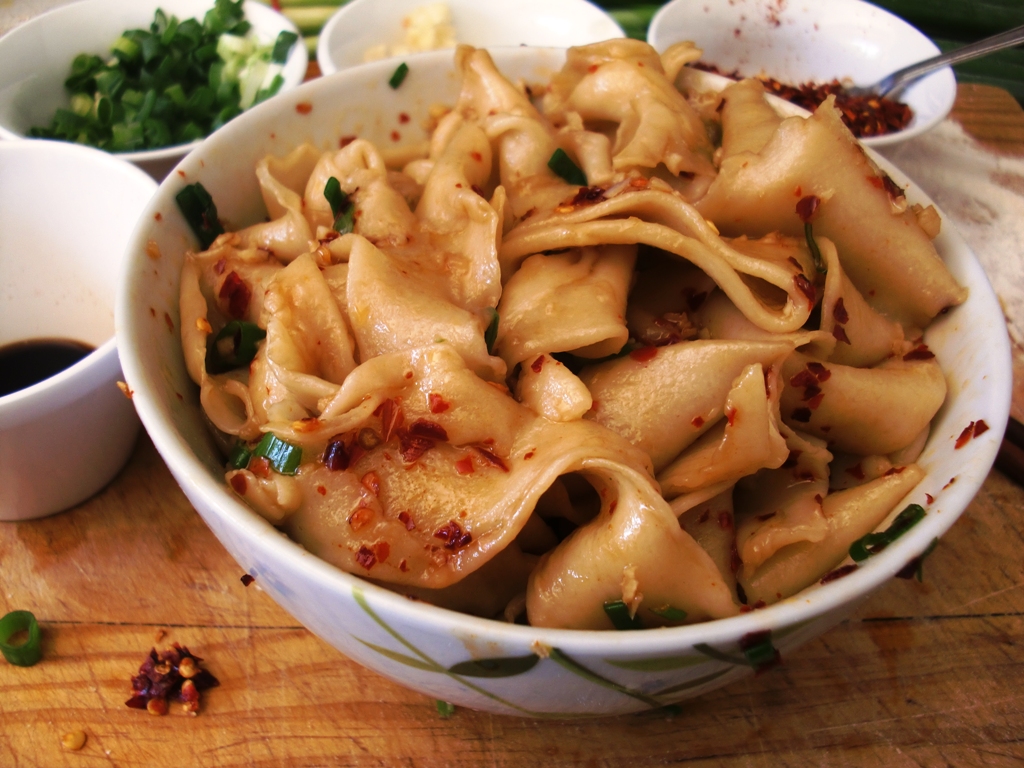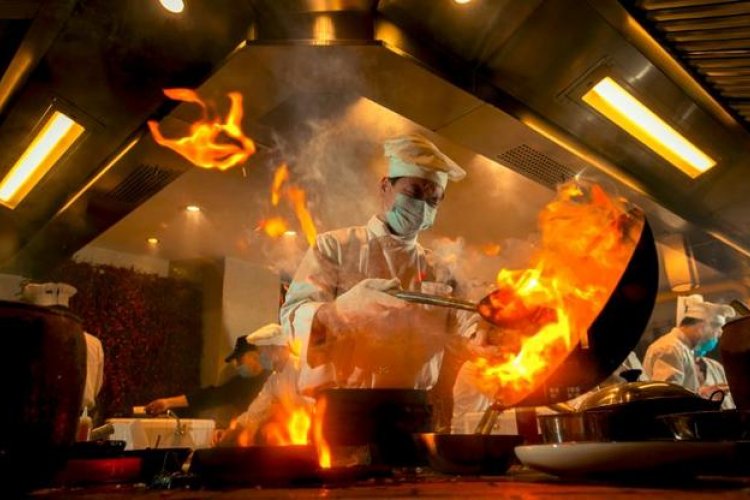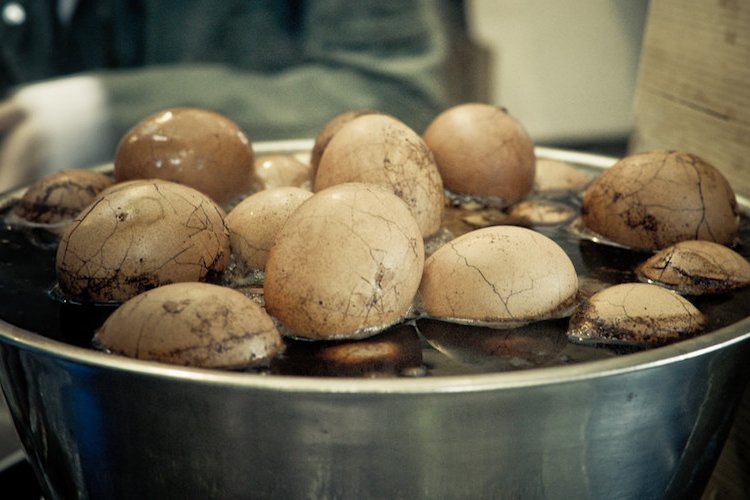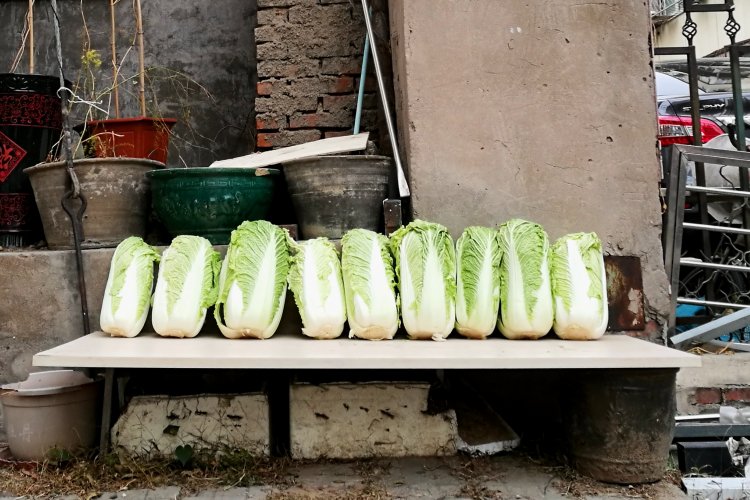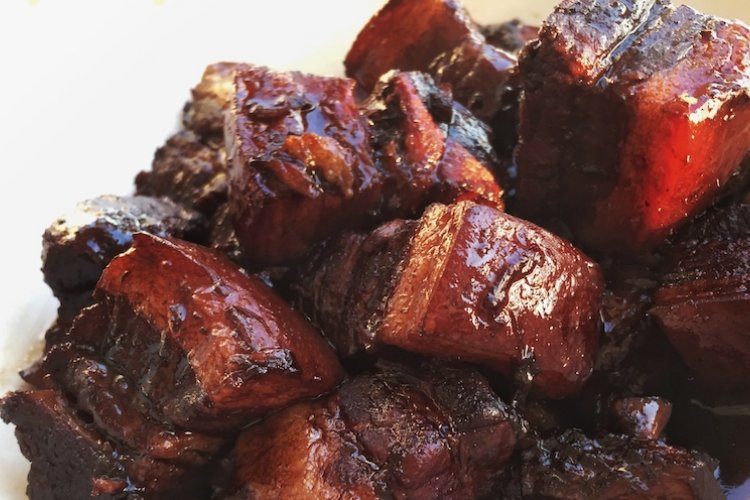Keep Cozy and Full With This Winter Warmer Recipe For Bouncy Biangbiang Noodles
Freezing weather. Airpocalypse. Netflix addiction. Laziness. They’re all fantastic reasons not to leave your house this winter. And not leaving the house provides a great opportunity to try this recipe for Xi’an’s most famous noodle, biangbiang mian.
The word biang is said to come from the sound the noodles make as you slap them against your chopping board or kitchen bench (see below). According to legend, the word went without a character for hundreds of years until a starving and impoverished scholar offered to invent one in exchange for a free bowl of noodles. The guy must have been starving to the point of hallucination because what he came up with was this:

A 58-stroke character that despite all the advances of modern technology cannot be entered into computers and smartphones. We promise making the noodles is far easier – and far more rewarding – than learning to write the character.
Ingredients
- 2 cups of plain flour – if you need to buy it, ask for 饺子粉 jiǎozifěn. Plus extra flour for your chopping board
- 1 cup of lukewarm water
- 1 tsp of salt, plus extra for seasoning
- 4 tbs of light soy sauce (生抽 shēngchōu)
- 2 tbs aged vinegar (陈醋 chéncù)
- 6-8 tbs of oil (preferably but not necessarily peanut oil)
- 1-2 tbs of chili flakes
- 6-8 cloves of garlic
- 2 chopped green onions (spring onions if you’re British, shallots if you’re Australian, 香葱 xiāngcōng to avoid confusion).
If you don’t already have these at home, use only the green parts of the ones you buy and put the white parts into a glass of water. They’ll grow back in a few days and you’ll never run out again.
Instructions
Place two cups of plain flour into your mixing bowl and mix in one teaspoon of salt. Add one cup of lukewarm water, a small splash at a time, mixing thoroughly between each addition.
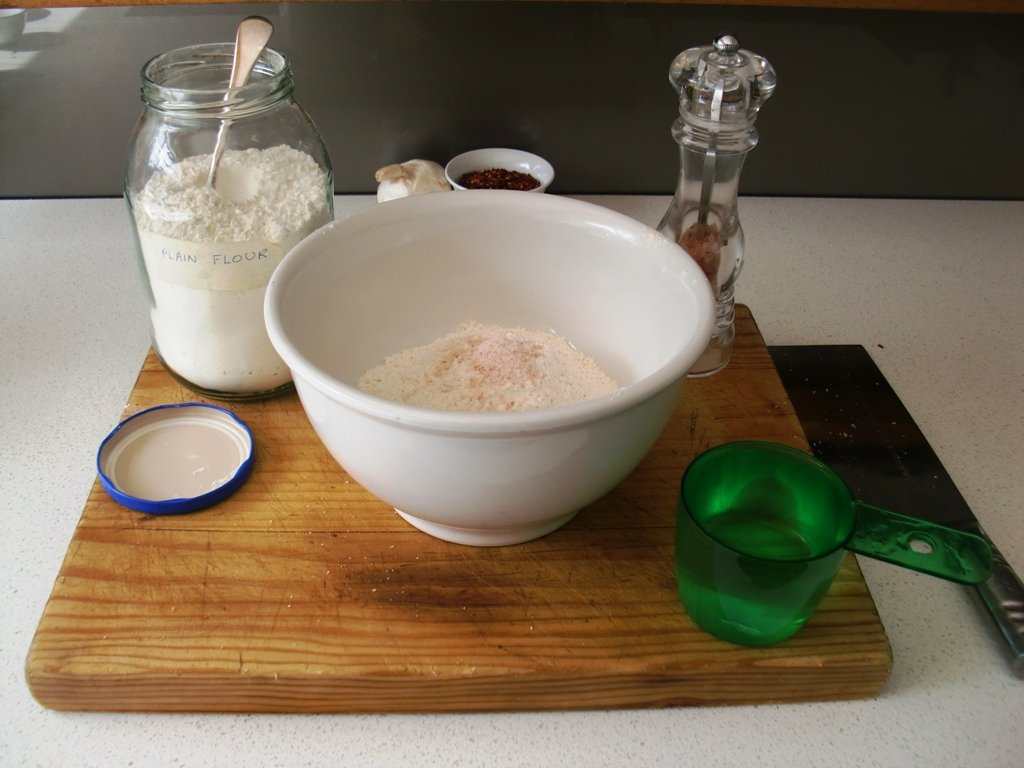
Once your dough has formed, remove it from the bowl, place it on a well-floured board, and knead it for 10 minutes.
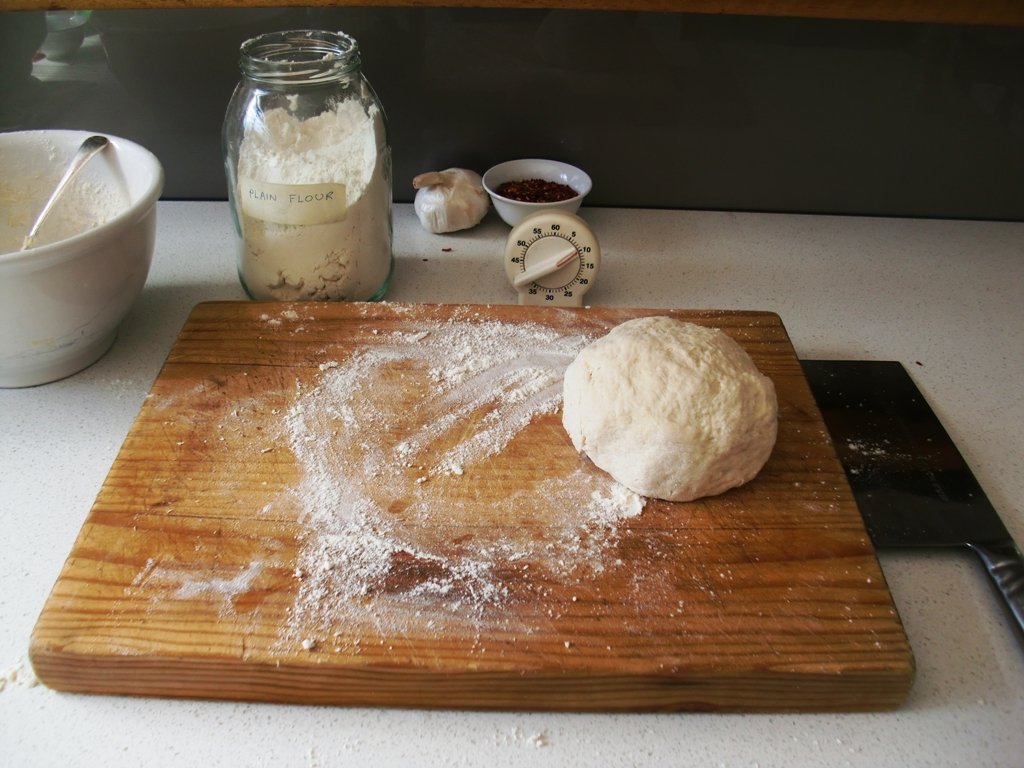
Return your dough to the mixing bowl, cover it, and leave it to rest for half an hour.
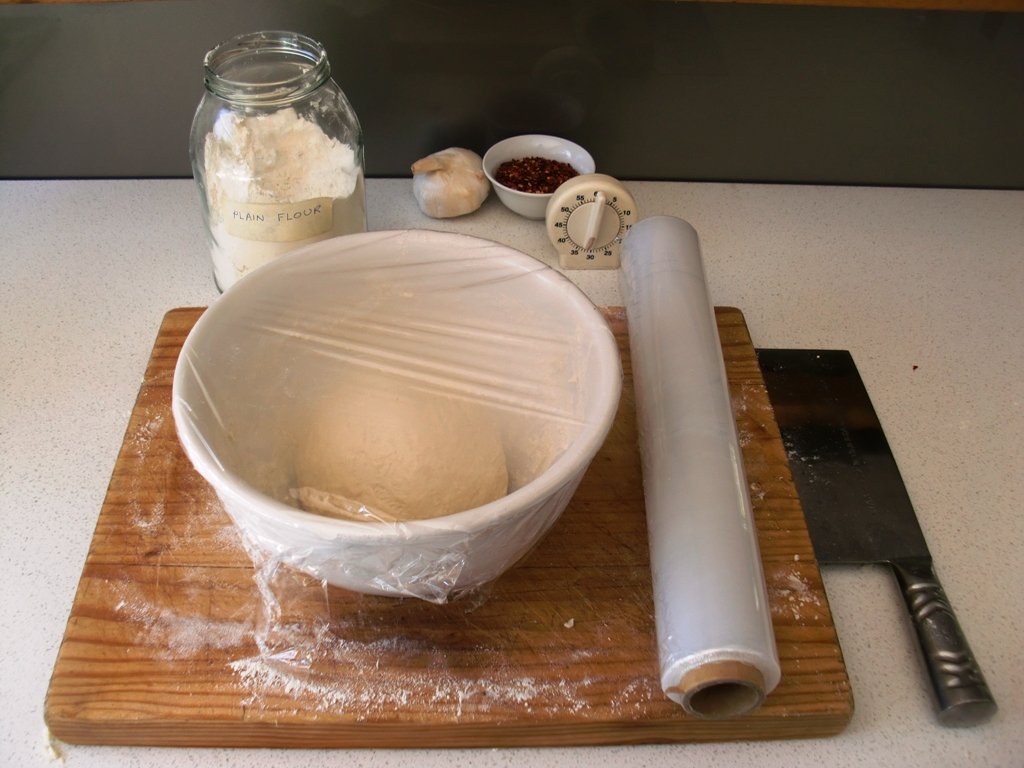
While your dough is resting, finely chop your green onions, mince your garlic, and prepare your chili flakes, soy sauce, vinegar, and oil.

After your dough has rested for half an hour, add a small splash of oil to a plate.
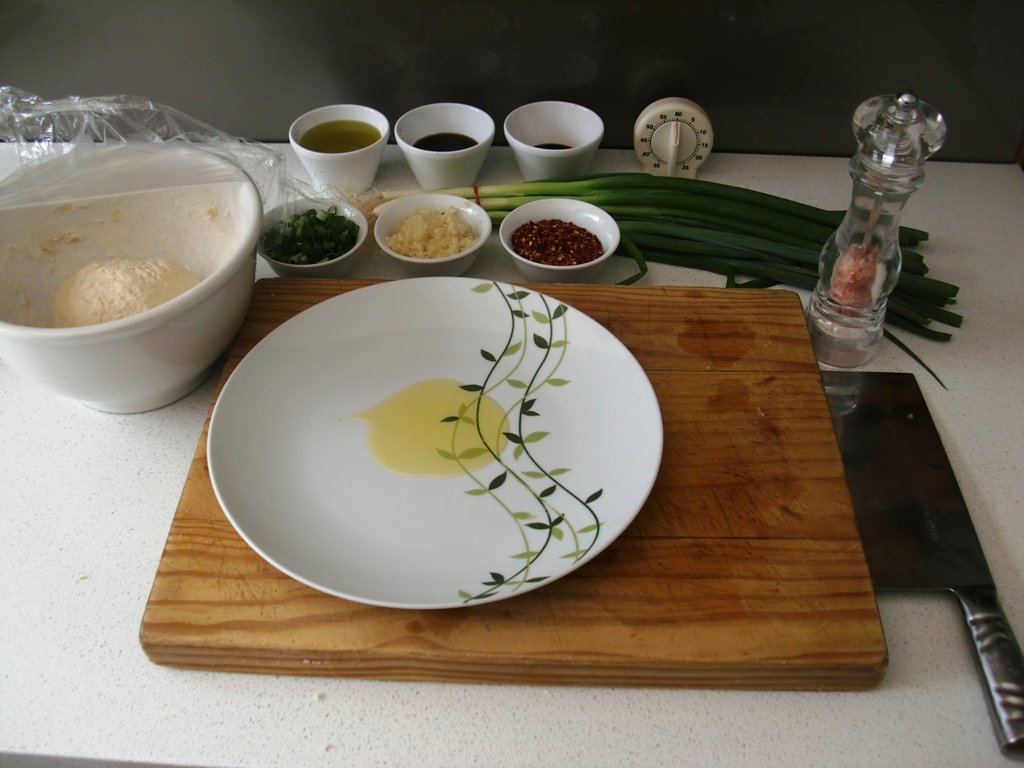
Form your dough into a long rectangle.
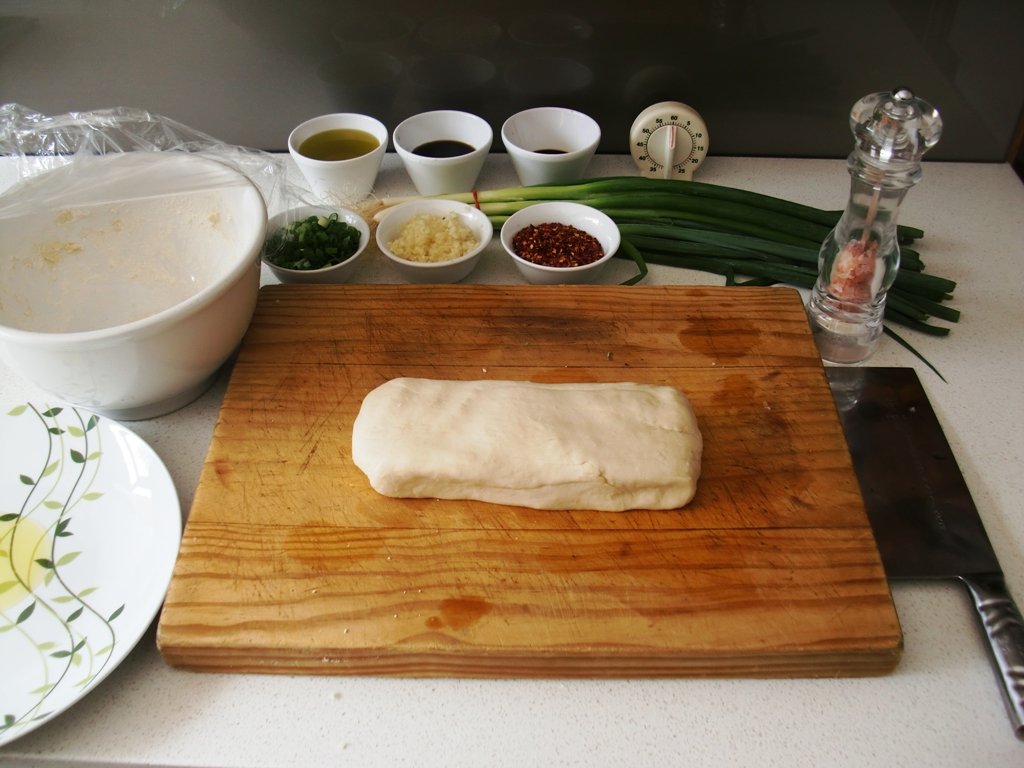
And cut into four equal pieces.
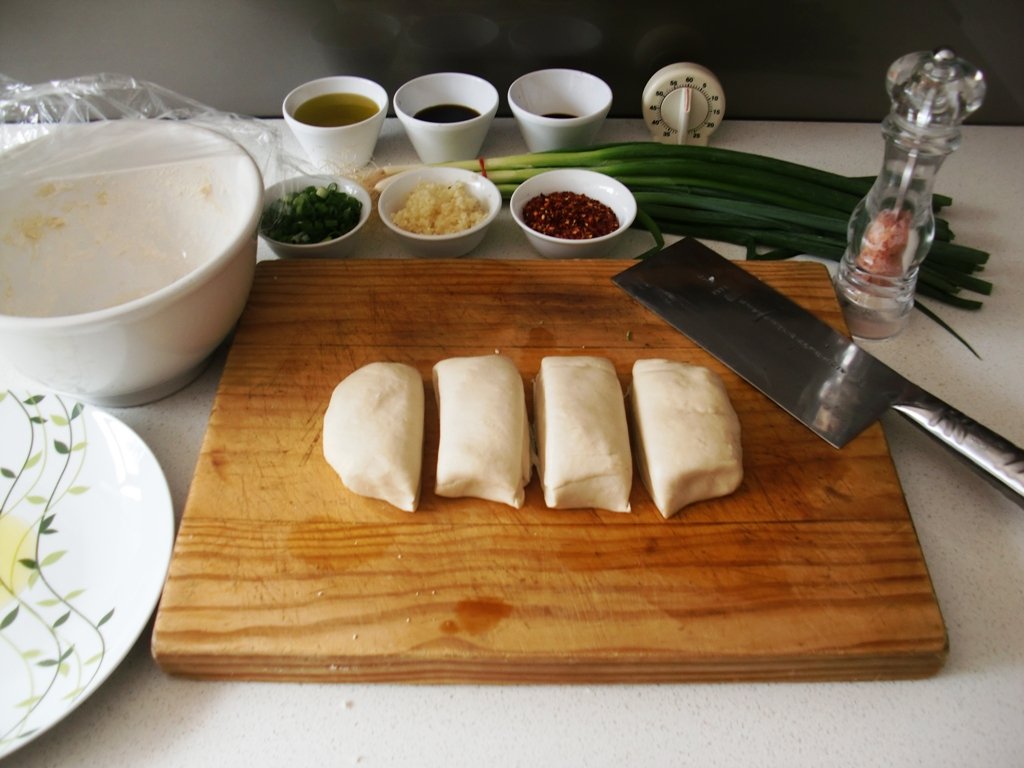
Roll each piece into a sausage shape.
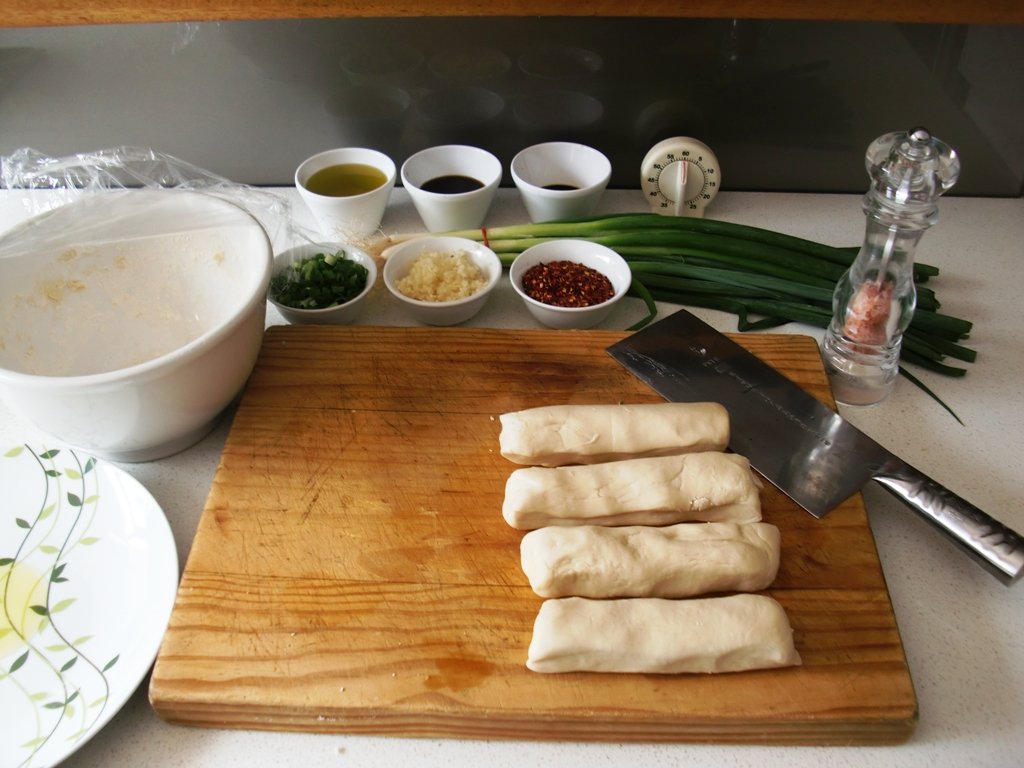
Roll your doughy sausages in the oil on the plate until each is completely coated in oil.
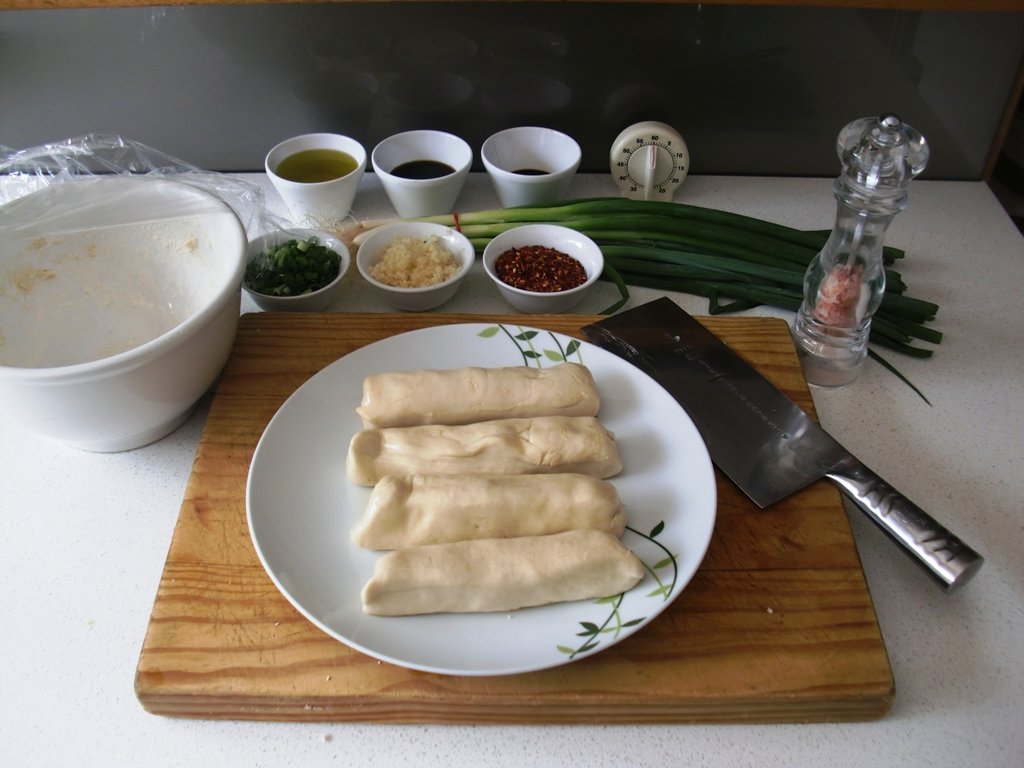
Cover and allow to rest for one hour. Once the hour is almost up, fill your largest pot with water and bring it to the boil.
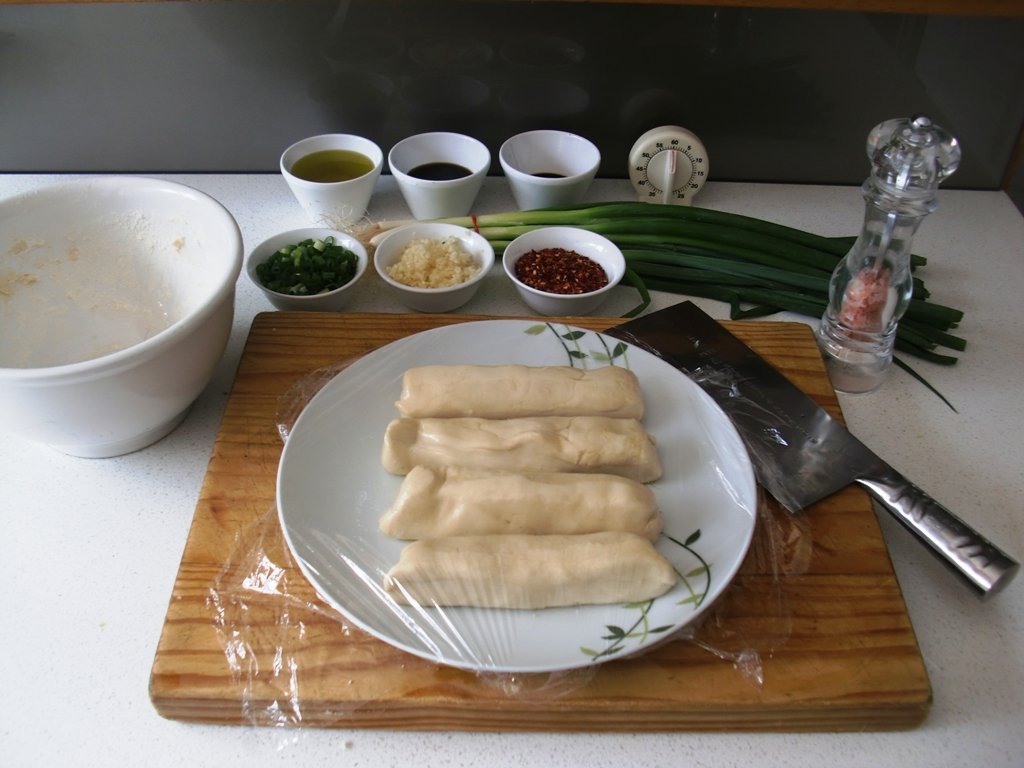
After an hour, flour your board and roll each sausage into a long, flat rectangle. Use your rolling pin (or empty wine bottle if you don’t have one) to make two indentations along the length of each rectangle, dividing each into thirds.
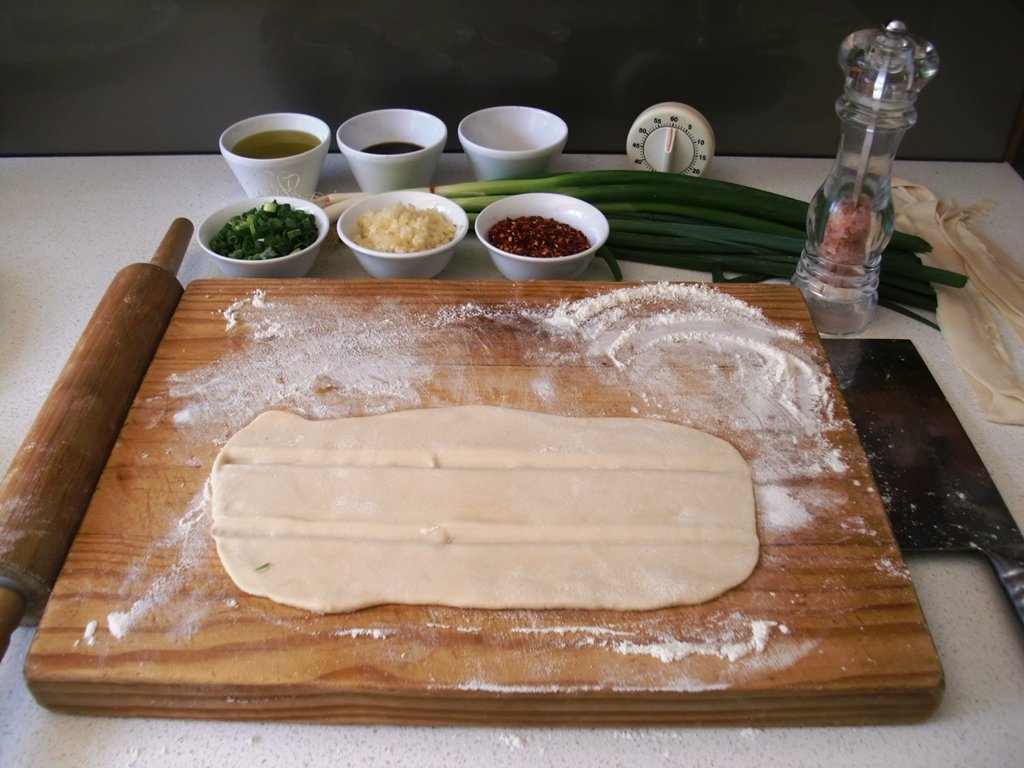
Holding one end of the rectangle firmly in each hand, wave the dough up and down to stretch it. This is where the "bianging" comes in: with each wave of your hands, slap the center of the dough against the board. The bianging gives the dough extra stretch and helps it stretch evenly.
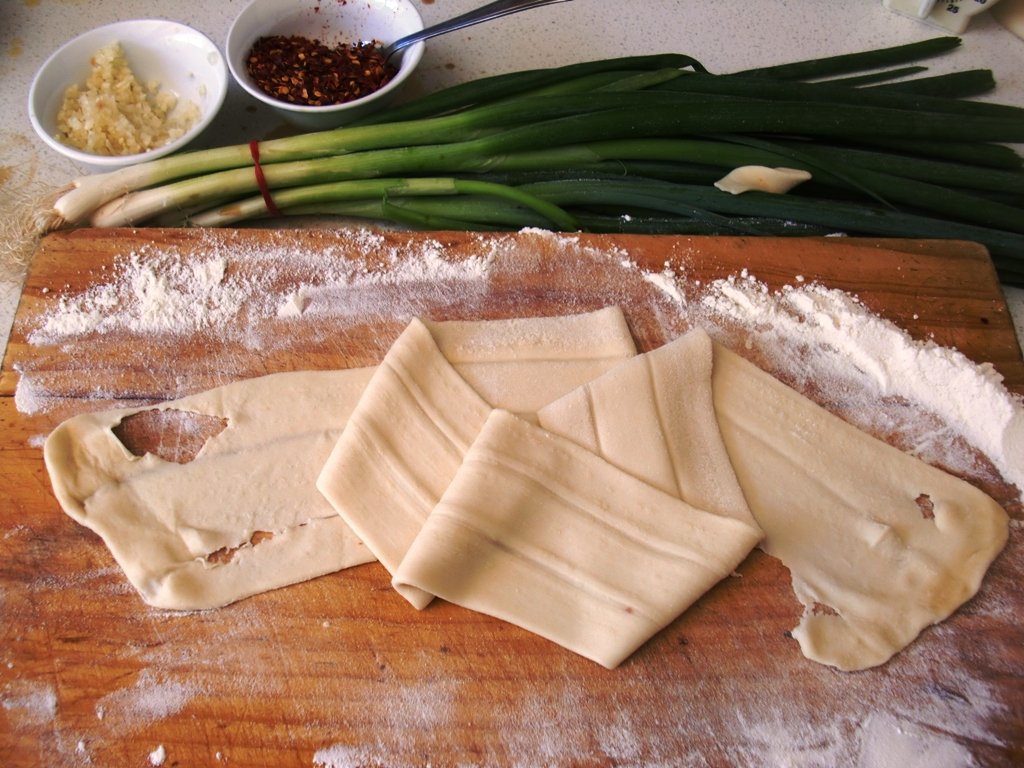
Once your four pieces of dough have been stretched, tear each piece along the grooves to separate each noodle. Add them to the pot, boil them for 1-2 minutes, drain them, and place equal portions into two bowls. Top each bowl of noodles with the green onions, garlic, and chili flakes.
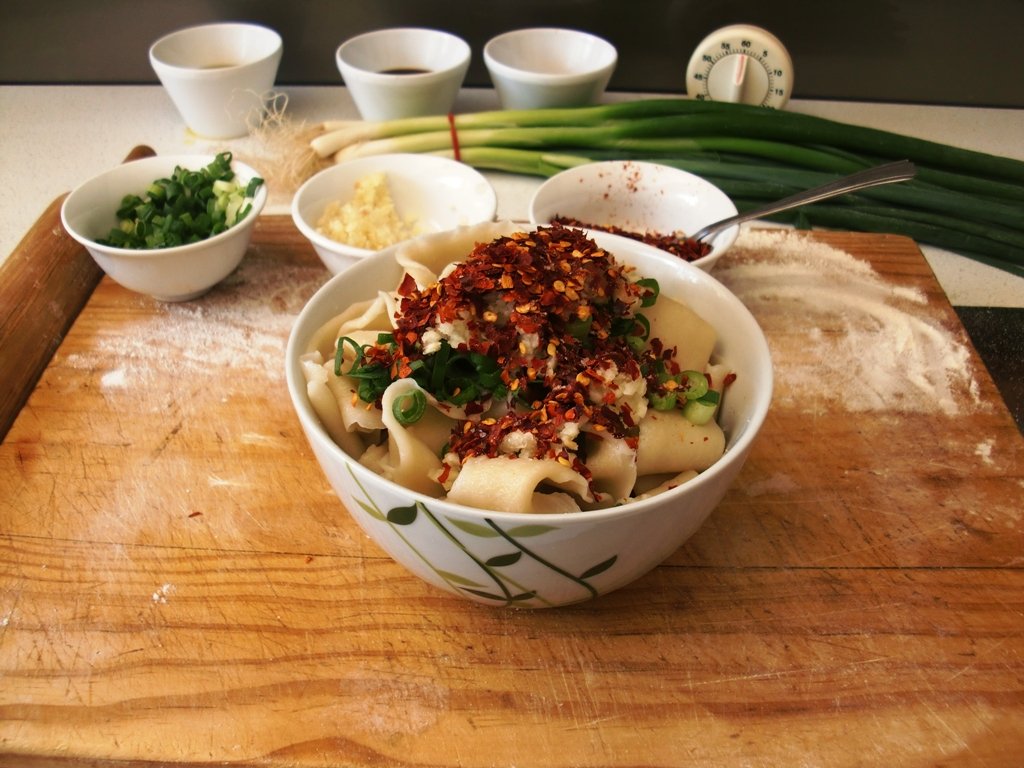
Place cooking oil into a small saucepan or skillet and heat until smoking. Pour half of the oil over each bowl, scalding the green onions, garlic, and chili flakes. Add two tablespoons of soy sauce and one tablespoon of vinegar to each bowl, season with salt and mix thoroughly.
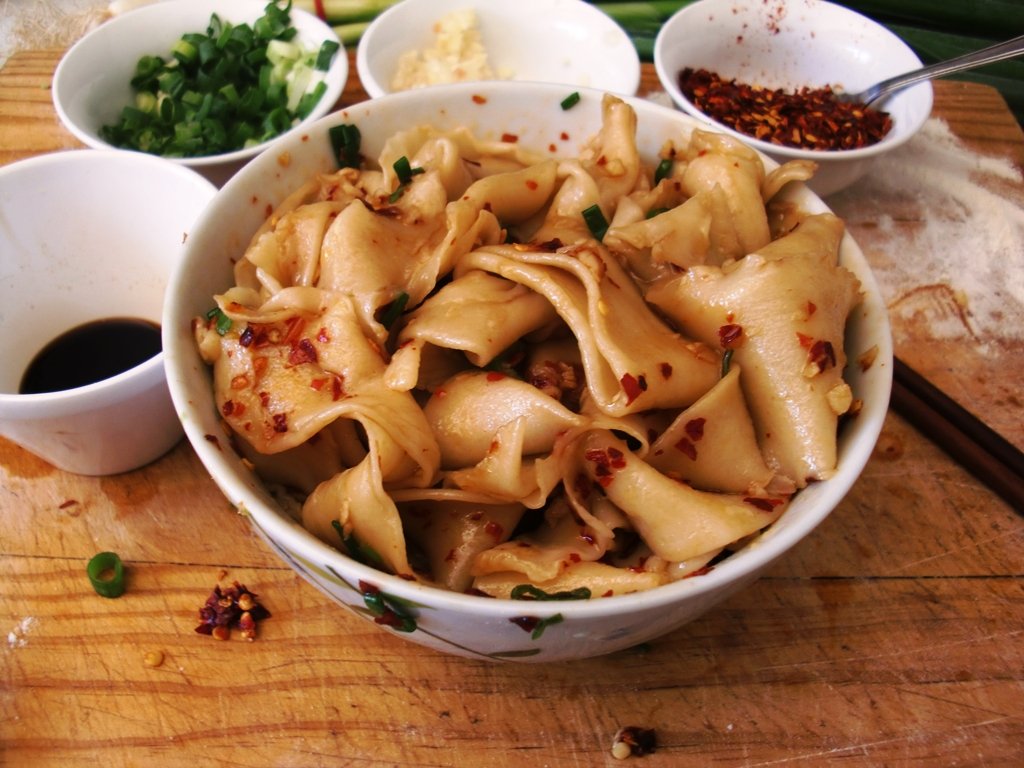
Finally, eat your delicious and filling noodles before falling down in carb heaven. Supplement with a ròujiāmó for a true Xi'an culinary experience.
READ: 3 of the Best Soothing Soups to Dispel Beijing's Sub-Zero Temperatures
See more Chinese cooking recipes here or previous blogs by this author here.
Photos: Garth Wilson, Wikipedia
Related stories :
Comments
New comments are displayed first.Comments
![]() schreursm
Submitted by Guest on Tue, 01/10/2017 - 22:56 Permalink
schreursm
Submitted by Guest on Tue, 01/10/2017 - 22:56 Permalink
Re: Keep Cozy and Full With This Winter Warmer Recipe For...
Wow, Beijinger finally figured out how to add more than one photo to a post. J/K This is good stuff, thanks and more like it please!
You clearly don't spend much time on the website.
![]() schreursm
Submitted by Guest on Mon, 01/09/2017 - 12:38 Permalink
schreursm
Submitted by Guest on Mon, 01/09/2017 - 12:38 Permalink
Re: Keep Cozy and Full With This Winter Warmer Recipe For...
Nice recipe, great photos. However, "zifa mianfen" is not plain flour, it is self-raising flour. The big clue is in the name. 自发 iterally means "Self firing"
So you want self-raising or plain? Because thats a pretty important difference, self-raising has added baking powder for rise.
Apologies, I've corrected it, this should be plain flour (饺子粉 jiǎozifěn)
![]() BB
Submitted by Guest on Mon, 01/09/2017 - 12:27 Permalink
BB
Submitted by Guest on Mon, 01/09/2017 - 12:27 Permalink
Re: Keep Cozy and Full With This Winter Warmer Recipe For...
Nice recipe, great photos. However, "zifa mianfen" is not plain flour, it is self-raising flour. The big clue is in the name. 自发 iterally means "Self firing"
So you want self-raising or plain? Because thats a pretty important difference, self-raising has added baking powder for rise.
Validate your mobile phone number to post comments.

